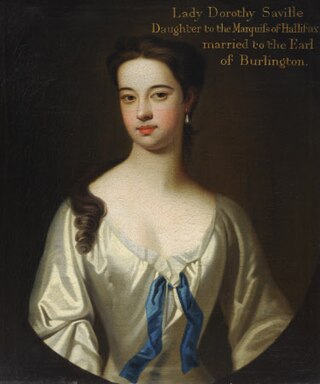
Savile Row is a street in Mayfair, central London. Known principally for its traditional bespoke tailoring for men, the street has had a varied history that has included accommodating the headquarters of the Royal Geographical Society at 1 Savile Row, where significant British explorations to Africa and the South Pole were planned; and more recently, the Apple office of the Beatles at 3 Savile Row, where the band's final live performance was held on the roof of the building.

Jermyn Street is a one-way street in the St James's area of the City of Westminster in London, England. It is to the south of, parallel, and adjacent to Piccadilly. Jermyn Street is known as a street for gentlemen's-clothing retailers in the West End.
Gieves & Hawkes is a bespoke men's tailor and menswear retailer located at 1 Savile Row in London, England. The business was founded in 1771. It was acquired in 2012 by the Hong Kong conglomerate Trinity Ltd., which was in turn purchased by Shandong Ruyi in 2017. After Trinity was subject to a winding-up petition for debt in September 2021, Gieves & Hawkes was acquired in November 2022 by Frasers Group, owner of Sports Direct.

Buck's Club is a gentlemen's club in London, located at 18 Clifford Street, established in June 1919. P. G. Wodehouse mentions it in some stories and modelled his Drones Club mostly after Buck's. It is probably best known for the Buck's Fizz cocktail, created there in 1921 by its bartender McGarry.

Cork Street is a street in Mayfair in the West End of London, England, with many contemporary art galleries, and was previously associated with the tailoring industry.

The Burlington Estate is an area in Mayfair to the north of Piccadilly in the West End of London, England. It was developed in the 18th century and owned by the Anglo-Irish Boyle dynasty, Earls of Burlington, in particular Richard, 3rd Earl of Burlington and 4th Earl of Cork (1694–1753).

7 Burlington Gardens is a Grade II* building in Mayfair, London. Formerly known as Queensberry House, it was later called Uxbridge House. The building was a bank for much of the 19th and 20th centuries, and was later for a time home to the London flagship store of the American fashion retailer Abercrombie & Fitch.
Doughty House is a large house on Richmond Hill in Richmond, London, England, built in the 18th century, with later additions. It has fine views down over the Thames, and both the house and gallery are Grade II listed buildings. This view from Richmond Hill is the only view in England protected by an Act of Parliament.

Savile Row tailoring is men and women's bespoke tailoring that takes place on Savile Row and neighbouring streets in Mayfair, Central London. In 1846, Henry Poole, credited as being the "Founder of Savile Row", opened an entrance to his tailoring premises at No. 32 Savile Row. The term bespoke is understood to have originated in Savile Row when cloth for a suit was said to "be spoken for" by individual customers. The short street has been termed the "golden mile of tailoring", where customers have included Charles III, Winston Churchill, Lord Nelson, Napoleon III, Muhammad Ali Jinnah, Laurence Olivier and Duke Ellington.

Fortress House was a building with its main entrance at 23 Savile Row in London W1, also including 5–9 New Burlington Street. It was built in 1949–50 to a design by Anthony Lloyd, and demolished in 2009.

Burlington Gardens is a street in central London, on land that was once part of the Burlington Estate.

Sackville Street is a street in central London which today is mainly composed of offices and the rears of retail premises, but once was the home to several important medical figures.

Old Burlington Street is a street in central London that is on land that was once part of the Burlington Estate.

Boyle Street is a short street in central London that is named after the Boyles, the Earls of Burlington, and is on land that was once part of the Burlington Estate.

New Burlington Street is a street in central London that is on land that was once part of the Burlington Estate. The current architecture of the street bears little resemblance to the original design of the street when first built in the early eighteenth century.

Beak Street is a street in Soho, London, that runs roughly east–west between Regent Street and Lexington Street.
George Squibb was a British auctioneer, succeeding his father James, who founded the auction house of Squibb & Son, and working from public rooms in Boyle Street, facing down Savile Row, London, where the elder Squibb had set up in 1778. The grand rooms had been built in the 1730s, at the time Lord Burlington was developing the second phase of his real estate venture at the end of Burlington House gardens; they were extended by Squibb with a top-lit auction room. In 1813 he sold the collection of paintings of the late Duke of San Pietro. Among the country house auctions that fell under his hammer was that of the contents of Streatham Park, sold for Hester Thrale Piozzi in May 1816. Among those associated with Squibb was Michael Bryan, the connoisseur and author of the Dictionary of Painters

Dorothy Boyle, Countess of Burlington and Countess of Cork was a British noble and court official, as well as a caricaturist and portrait painter. Several of her studies and paintings were made of her daughters. Through her daughter Charlotte, who married the 4th Duke of Devonshire. A collection of 24 of her works of art descended to the Duke of Devonshire and kept at Chatsworth House.

Bolton Street is a street in Mayfair London, between Curzon Street to its north, and Piccadilly to its south. It is named after the Duke of Bolton, and was from its construction during the 17th century and 1708 the westernmost street of London.

















